DEVILLE C07897 Manuale del proprietario
- Categoria
- Camini
- Tipo
- Manuale del proprietario
Questo manuale è adatto anche per

FOYERS
STOVE
FOCOLARE
FOGÃO
NOTICE D’EMPLOI
MANUAL UTILISATION
ISTRUZIONI PER L’IMPIEGO
MANUAL DE UTILIZAÇÃO
P0029682-01 06/05
C07897
C07898

FRANÇAIS.................................................................... p 3
ENGLISH...................................................................... p 11
ITALIANO .................................................................... p 19
PORTUGUÊS................................................................. p 27
2

3
SOMMAIRE
1 - DESIGNATION .............................................................................................................................. 4
2 - PUISSANCE CALORIFIQUE NOMINALE ET AUTONOMIE EN ALLURE REDUITE.................. 4
3 - DESCRIPTION ET ENCOMBREMENT ......................................................................................... 4
3.1 - Description
3.2 - Encombrement
4 - ENVIRONNEMENT ET ACCESSOIRE COMPLEMENTAIRE....................................................... 5
4.1 - Environnement
4.2 - Accessoire en option
4.3 - Montage de l’accessoire en option
5 - CONDITIONS D’UTILISATION DE L’APPAREIL ......................................................................... 5
5.1 - Premier allumage
5.2 - Combustible
5.2.1 Combustible recommandé
5.2.2 Combustible de remplacement
5.2.3 Combustibles interdits
5.3 - Emploi des organes de manoeuvre
5.4 - Utilisation
5.4.1 Allumage
5.4.2 Fonctionnement
5.4.2.1 Fonctionnement en foyer fermé
5.4.2.2 Décendrage
5.4.2.3 Règles de sécurité
6 - CONSEILS DE RAMONAGE ET D’ENTRETIEN DE L’APPAREIL
ET DU CONDUIT DE FUMEE............................................................................................................. 8
7 - CONDITIONS GENERALES DE GARANTIE................................................................................ 10

4
Nous vous conseillons de lire attentivement, et au complet, le texte de la notice afin de tirer le meilleur
usage et la plus grande satisfaction de votre appareil DEVILLE.
Le non-respect des instructions de montage, d’installation et d’utilisation entraîne la responsabilité de celui
qui les effectue.
CET APPAREIL DOIT ETRE INSTALLE CONFORMEMENT AUX SPECIFICATIONS DES D.T.U. EN VIGUEUR.
L’INSTALLATION PAR UN PROFESSIONNEL QUALIFIE EST RECOMMANDEE.
1 - DESIGNATION
Les foyers-inserts C07897 et C07898 sont conformes à la norme française : NF D 35-376 classification
C-G-B-sf-Em 15 kW.
Ce sont des appareils de chauffage continu à combustion sur grille fonctionnant exclusivement au bois,
à chambre de combustion semi-fermée et conçus pour être encastrés dans une cheminée à construire.
2 - PUISSANCE CALORIFIQUE NOMINALE ET AUTONOMIE EN ALLURE REDUITE
- Puissance calorifique nominale suivant norme NF D 35-376 pendant l’essai d’allure normale : 15 kW.
. Obtenue sous un tirage de 10 Pa avec une charge de 16
kg de bois, constituée de 3 bûches de
bois dur, non fendues.
. La puissance annoncée est la puissance moyenne obtenue au cours de cet essai de 3 heures.
. Pour obtenir ce régime de puissance, recharger sur un lit de braises de 500 g
environ, soit 3 cm
d’épaisseur et mettre la tirette de réglage d’air en position 3 (Fig. 9e)
.
- Une autonomie supérieure à 10h, à puissance réduite, est obtenue avec un chargement complet, en
fermant totalement la tirette de réglage d’air.
3 - DESCRIPTION ET ENCOMBREMENT
3.1 Description
Les principaux éléments constituant votre appareil sont indiqués et repérés sur la Fig. 1
.
La porte en fonte est munie de joints qui assurent l’étanchéité et permettent une grande
autonomie de fonctionnement.
La tirette de réglage, située en partie basse de la porte, permet de choisir une allure de feu.
Une entrée d’air secondaire est intégrée dans la partie haute du vitrage pour la maintenir propre
et assurer une meilleure combustion du bois.
. Poids net de l’appareil : environ 150 kg pour C07897
environ 195 kg pour C07898
3.2 Encombrement
Dimensions extérieures (valeurs en mm) :
. Pour C07897 : Fig. 2
. Pour C07898 : Fig. 3

5
4 - ENVIRONNEMENT ET ACCESSOIRE COMPLEMENTAIRE
4.1 Environnement
Les foyers C07897 et C07898 sont destinés à être installés dans une cheminée neuve DEVILLE.
4.2 Accessoire en option
Il peut être équipé sur demande :
. D’un kit carénage C07068 (Fig. 4)
.
4.3 Montage de l’accessoire en option
Cet ensemble doit être monté avant l’installation du foyer dans la cheminée et suivant la notice
jointe à cette option.
5 - CONDITIONS D’UTILISATION DE L’APPAREIL
Ce « foyer fermé »
est un véritable appareil de chauffage :
- Rendement élevé
- Fonctionnement en allure réduite de longue durée
ATTENTION : L’action sur la tirette de réglage d’air permet d’obtenir un supplément d’air pour
l’allumage : (position (A) voir Fig. 9a et 9b. La position (A) est réservée exclusivement aux
opérations de reprise et d’allumage, elle ne doit pas être maintenue plus de 30 min sous peine
de graves dommages sur l’appareil et son environnement. L’appareil doit rester sous
surveillance pendant toute la durée d’utilisation de la position « ALLUMAGE (A) ».
5.1 Premier allumage
- Après réalisation de la cheminée et mise en place de l’appareil, respecter le temps de séchage
des matériaux utilisés pour la construction (2 à 3 semaines).
- Après le premier allumage (voir paragraphe 5.4.1), faire un feu modéré pendant les premières
heures en limitant le chargement de l’appareil (une bûche de Ø 15 cm) avec la tirette d’air en
allure intermédiaire d (Fig. 9d)
:
. Montée en température progressive de l’ensemble des éléments de la cheminée et
dilatation normale de l’appareil.
- Pendant les premières utilisations, une odeur de peinture peut se dégager de l’appareil : aérer
la pièce pour limiter ce désagrément.
5.2 Combustible
5.2.1 Combustible recommandé
Bois dur
: chêne, charme, hêtre, châtaigner…
Nous vous conseillons d’utiliser du bois très sec (20% d’humidité maximum), soit 2 ans de
stockage sous abri après la coupe, afin d’obtenir de meilleurs rendements et d’éviter le
bistrage du conduit de fumée et de la vitre.
Eviter l’utilisation des bois résineux (pins, sapins, épicéas…) qui nécessitent un entretien
plus fréquent de l’appareil et du conduit.

6
5.2.2 Combustible de remplacement
La briquette de lignite, en fonctionnement « porte fermée » uniquement, permet l’obtention
d’allures réduites de longue durée.
Limiter la charge à 6 kg et placer la tirette de réglage d’air en position intermédiaire d
(Fig. 9d)
.
5.2.3 Combustibles interdits
Tous les combustibles autres que le bois et la briquette de lignite sont interdits,
notamment le charbon et ses dérivés.
Les flambées de petits bois, sarments, planchettes, paille, carton sont dangereuses et à
exclure.
5.3 Emploi des organes de manoeuvre
- Tirette de réglage d’air (Fig. 9c, 9d, 9e)
:
. Le réglage d’allure, position c, d ou e, est obtenu en manœuvrant la tirette par
l’intermédiaire de la main froide.
. La position d’allumage (A) est obtenue en manœuvrant la tirette directement avec la main :
cette position ne doit être utilisée que lorsque l’appareil est « froid ».
- Poignée de porte (Fig. 7)
: elle doit être manœuvrée par l’intermédiaire de la main froide.
5.4 Utilisation
5.4.1 Allumage
- Mettre la tirette de réglage en position A. Pour cela :
. Pousser la tirette vers la gauche jusqu’à la butée (Fig. 9a)
.
. Effectuer une légère rotation (Fig. 9a)
repère (R).
. Effectuer la translation (Fig. 9a)
repère (T) et (Fig. 9b).
- Placer sur la grille du papier froissé et du petit bois très sec (brindilles), puis des
branches de bois fendues de section plus importante (Ø 3 à 5 cm).
- Enflammer le papier et refermer la porte.
- Lorsque la charge de « petit bois » est bien enflammée, ouvrir la porte, charger l’appareil
avec le combustible recommandé, fermer la porte et placer la tirette de réglage d’air en
position c, d ou e selon la puissance désirée (Fig. 9c, 9d et 9e)
.
5.4.2 Fonctionnement
5.4.2.1 Fonctionnement en foyer fermé
- L’allure désirée est obtenue en agissant sur la tirette de réglage d’air (voir
paragraphe 5.3) et en choisissant une charge correspondant aux besoins, soit :
. Pour un chauffage maximum, charger l’appareil avec 3 bûches d’environ
12 cm de diamètre.

7
. Pour une allure intermédiaire, utiliser une charge moins importante : une
ou deux bûches.
. Pour un chauffage de longue durée en allure réduite, utiliser une ou deux
bûches non fendues de diamètre supérieur à 15 cm.
- Pour obtenir une allure réduite de longue durée, procéder au chargement sur un lit
de braises à peine rougeoyantes.
- Pour obtenir une reprise rapide, après une allure réduite, relancer le feu avec du
petit bois, effectuer le chargement, placer la tirette de réglage d’air en position (A)
Fig. 9a et 9b
pendant quelques minutes pour accélérer l’embrasement, en gardant
l’appareil sous surveillance, puis refermer la tirette. Cette opération permet
d’accélérer la reprise, notamment si le bois est humide.
- Effectuer les changements d’allure (passage de l’allure normale à l’allure réduite
par exemple) avant les rechargements, pendant la phase de combustion des
braises, pour permettre à l’appareil et au conduit de fumées de changer
progressivement de régime.
- Pour éviter les refoulements au moment des rechargements, entrouvrir la porte,
marquer un temps d’arrêt, pour ouvrir lentement la porte. (Ne pas oublier d’arrêter le
ventilateur, le cas échéant, pour éviter d’aspirer des cendres et des fumées).
- Le fonctionnement continu en allure réduite, surtout pendant les périodes de
redoux et avec du bois humide, entraîne une combustion incomplète qui favorise les
dépôts de bistre et de goudron. Alterner les périodes de ralenti par des retours en
fonctionnement à allure normale.
- Après un fonctionnement en allure réduite, la vitre peut s’obscurcir à cause d’un
léger bistrage. Ce dépôt disparaît normalement en fonctionnement à plus vive allure
par pyrolyse.
5.4.2.2 Décendrage
L’air utilisée pour la combustion du bois arrive sous la grille lorsque la tirette de
réglage d’air est ouverte. Cet air assure également le refroidissement
de la grille. Il
est donc indispensable, pour obtenir les performances optimales et éviter la
dégradation de la grille sous l’effet de la surchauffe, d’éviter son obstruction en
procédant régulièrement au décendrage et à l’évacuation des cendres.
- La raclette permet d’effectuer le décendrage de la grille (Fig. 6)
.
- Le cendrier, situé sous la grille, est facilement extrait en le tirant à l’aide d’un
tisonnier.
Le niveau des cendres ne doit jamais atteindre la grille en fonte du foyer.
5.4.2.3 Règles de sécurité
- Ne jamais jeter d’eau pour éteindre le feu.
- La vitre de l’appareil est très chaude : attention aux risques de brûlures notamment
pour les enfants.
- L’appareil dégage par rayonnement à travers le vitrage, une importante chaleur :
ne pas placer de matériaux, ni d’objets sensibles à la chaleur à une distance
inférieure à 1,50 m de la zone vitrée.
- Vider le contenu du cendrier dans un récipient métallique ou ininflammable
exclusivement réservé à cet usage. Les cendres, en apparence refroidies, peuvent
être très chaudes même après quelques temps de refroidissement.

8
- Ne pas mettre en place des matériaux facilement inflammables au voisinage de
l’appareil et dans le bûcher.
En particulier, ne pas stocker de bois sous l’appareil (Fig. 8)
.
6 - CONSEILS DE RAMONAGE ET D’ENTRETIEN DE L’APPAREIL ET DU CONDUIT DE FUMEE
Le ramonage mécanique du conduit de fumée est obligatoire, il doit être réalisé plusieurs fois par an
dont une fois au moins pendant la saison de chauffe. Un certificat doit être établi par l’entrepreneur.
A l’occasion des ramonages, il faudra :
- Procéder au démontage du déflecteur :
. Démonter le déflecteur (A) en le soulevant et en le tirant vers l’avant (Fig. 5a)
repère c.
. Laisser descendre la partie arrière du déflecteur (A) (Fig. 5a)
repère d et e et le sortir (Fig. 5b).
. Pour remonter le déflecteur : agir dans l’ordre inverse du démontage (déflecteur en place Fig. 5c
).
- Vérifier complètement l’état de l’appareil et en particulier les éléments assurant l’étanchéité : joints et
organes de verrouillage, pièces d’appui (porte, châssis).
- Vérifier l’état du conduit de fumées et du conduit de raccordement : tous les raccords doivent
présenter une bonne tenue mécanique et avoir conservé leur étanchéité.
- Nettoyer à l’aspirateur l’intérieur de la hotte pour éviter l’accumulation de poussières, dégager si
nécessaire le circuit de convection d’air chaud.
En cas d’anomalie : faire réparer l’appareil ou l’installation par un professionnel.
ENTRETIEN COURANT
- Nettoyer la vitre avec un chiffon humide et de la cendre. Si c’est nécessaire, utiliser un produit de
nettoyage ménager adapté en respectant les instructions des notices d’utilisation.
Attendre que l’appareil soit complètement refroidi pour procéder à cette opération.
- Nettoyer régulièrement la réglette d’admission d’air secondaire (Fig. 10)
:
. Enlever à l’aspirateur (suivant flèches) c les particules et poussières qui sont coincées entre les
guides d’air et le verre (Fig. 10)
.
. Gratter avec l’extrémité d’un objet métallique d l’arrête inférieure de la réglette d’admission d’air
pour enlever le bistre qui a pu s’y agglomérer (Fig. 11)
.
Ces particules gênent la formation du film d’air secondaire qui protège le vitrage du contact direct avec
les fumées et complète la combustion du bois.
Ces opérations doivent être effectuées dès que le verre est sale et impérativement après extinction
totale du foyer.
- Nettoyer régulièrement les grilles de sorties d’air chaud de la hotte. Elles se colmatent d’autant plus
rapidement que leur maillage est fin : choisissez une fréquence adaptée.
- Contrôler l’efficacité du dispositif de fermeture de la porte, et si nécessaire effectuer les opérations
suivantes en se reportant à la figure 12 :

9
Durcir la fermeture :
. Desserrer la vis c (clé plate de 10).
. Tourner l’excentrique d de façon à augmenter la distance « d » entre l’axe de l’excentrique et le
point de contact de la came e.
. Maintenir l’excentrique dans cette position et resserrer la vis c.
Assouplir la fermeture :
. Desserrer la vis c (clé plate de 10).
. Tourner l’excentrique d de façon à augmenter la distance « d » entre l’axe de l’excentrique et le
point de contact de la came e.
. Maintenir l’excentrique dans cette position et resserrer la vis c.
Procéder de la même façon pour régler le dispositif de verrouillage de la façade mobile de l’appareil
C07898.
. Utiliser un tournevis cruciforme.
. L’effort de serrage doit être identique sur les 2 cames.

10
7 - CONDITIONS GENERALES DE GARANTIE
1. MODALITES
En dehors de la garantie légale, à raison des vices cachés, DEVILLE garantit le matériel en cas de vices
apparents ou de non-conformité du matériel livré au matériel commandé.
Sans préjudice des dispositions à prendre vis-à-vis du transporteur, les réclamations lors de la réception du
matériel sur les vices apparents ou la non-conformité, doivent être formulées auprès de DEVILLE par l’acheteur
dans les cinq jours de la constatation du vice par voie de lettre recommandée avec demande d’avis de
réception. Il appartient à l’acheteur de fournir toute justification quant à la réalité des vices ou des anomalies
constatées. L’acheteur doit, par ailleurs, laisser à DEVILLE toute facilité pour procéder à la constatation de ces
vices ou anomalies et pour y porter remède. De même l’acheteur doit tenir les matériels non conformes à la
disposition de DEVILLE, selon les instructions de cette dernière. Tout retour du matériel doit faire l’objet d’un
accord préalable.
2. ETENDUE
La garantie de DEVILLE couvre, à l’exclusion de toute indemnité ou dommages-intérêts, le remplacement
gratuit ou la réparation du matériel ou de l’élément reconnu défectueux (hors pièces d’usure) par ses services à
l’exclusion des frais de main-d’œuvre, de déplacement et de transport.
Sur les appareils émaillés, les craquelures ne sont jamais considérées comme un défaut de fabrication. Elles
sont la conséquence de différence de dilatation tôle-émail ou fonte-émail et ne modifient pas l’adhérence. Les
pièces de rechange fournies à titre onéreux sont garanties six mois à partir de la date de facture ; toute garantie
complémentaire consentie par un revendeur de DEVILLE n’engage pas DEVILLE. La présentation du certificat
de garantie portant le cachet à date du revendeur DEVILLE est rigoureusement exigée lorsque la garantie est
invoquée. Ce certificat doit être présenté lors de la demande de réparation de l’appareil sous garantie, ou bien
un talon ou un volet détachable de ce certificat doit, selon l’organisation propre à DEVILLE, être retourné à
celle-ci dans les délais impartis. A défaut, la date figurant sur la facture émise par DEVILLE ne peut être prise
en considération. Les interventions au titre de la garantie ne peuvent avoir pour effet de prolonger celle-ci.
3. DUREE
La durée de la garantie contractuelle assurée par DEVILLE est d’une année à compter de la date d’achat de
l’appareil par l’usager, sous réserve que les réclamations prévues au titre des modalités ci-dessus aient été
formulées dans les délais impartis. La réparation, le remplacement ou la modification de pièces pendant la
période de garantie ne peut avoir pour effet de prolonger la durée de celle-ci, ni de donner lieu en aucun cas à
indemnité pour frais divers, retard de livraison, accidents ou préjudices quelconques.
4. EXCLUSION
La garantie ne s’applique pas dans les cas suivants, sans que cette liste soit exhaustive :
Installation et montage des appareils dont la charge n’incombe pas à DEVILLE. En conséquence, DEVILLE ne
peut être tenue pour responsable des dégâts matériels ou des accidents de personne consécutifs à une
installation non conforme aux dispositions légales et réglementaires (par exemple l’absence de raccordement à
une prise de terre ; mauvais tirage d’une installation) ;
Usure normale du matériel ou utilisation ou usage anormal du matériel, notamment en cas d’utilisation
industrielle ou commerciale ou emploi du matériel dans des conditions différentes de celles pour lesquelles il a
été construit. C’est le cas par exemple du non-respect des conditions prescrites dans la notice DEVILLE :
exposition à des conditions extérieures affectant l’appareil telles qu’une humidité excessive ou variation
anormale de la tension électrique ;
Anomalie, détérioration ou accident provenant de choc, chute, négligence, défaut de surveillance ou d’entretien
de l’acheteur ;
Modification, transformation ou intervention effectuée par un personnel ou une entreprise non agréée par
DEVILLE ou réalisée avec des pièces de rechange non d’origine ou non agréées par le constructeur.
5. CONDITIONS PARTICULIERES DE GARANTIE
Ces conditions complètent et précisent les conditions générales de garanties ci-dessus et ont primauté sur
celles-ci, se reporter au feuillet ci joint « Conditions particulières de vente DEVILLE – Garantie ».

11
CONTENTS
1 - DEFINITION................................................................................................................................... 12
2 - RATED HEATING OUTPUT AND REFUELING TIMES AT LOW SPEED ................................... 12
3 - DESCRIPTION AND OVERALL DIMENSIONS ............................................................................ 12
3.1 - Description
3.2 - Overall Dimensions
4 - ENVIRONMENT AND COMPLEMENTARY ACCESSORY .......................................................... 13
4.1 - Environment
4.2 - Optional accessory
4.3 - Setting up of the appliance is optional
5 - REQUIREMENTS .......................................................................................................................... 13
5.1 - Lighting the stove for the first time
5.2 - Fuel
5.2.1 Recommended Fuel
5.2.2 Alternative Fuels
5.2.3 Prohibited fuels
5.3 - Use of controls and accessories
5.4 - Using the appliance
5.4.1 Lighting the Stove
5.4.2 Working requirements
5.4.2.1 Working with door closed
5.4.2.2 Ash Removal
5.4.2.3 Safety Rules
6 - SWEEPING AND MAINTENANCE RECOMMENDATIONS STOVE AND SMOKE FLUE........... 16
7 - GLOBAL TERMS OF WARRANTY............................................................................................... 18

12
You are advised to read carefully and in full the information provided in order to get the best performance -
and the most satisfaction - out of your DEVILLE stove.
Failure to comply with the assembly, installation and operating instructions places all responsibility upon
the person(s) concerned.
THIS APPLIANCE MUST BE INSTALLED IN COMPLIANCE WITH CURRENT D.T.U. SPECIFICATIONS.
INSTALLATION BY A QUALIFIED TRADESMAN IS RECOMMENDED.
1 - DEFINITION
The insert-hearths C07897 and C07898 comply with the French standard : NF D 35-376 classification
C-G-B-sf-Em 15 kW.
They are continuous heating appliances, with an on-grid combustion using wood exclusively, with a
semi-closed combustion chamber. They are meant to be built-in in a fireplace to be built.
2 - RATED HEATING OUTPUT AND REFUELING TIMES AT LOW SPEED
- Rated heating output in accordance with French Standard NF D35 - 376 during testing at normal
speed : 15 kW.
. Obtained on a 10 Pa draft with a 16kg-wood load, constituted by 3 non-split logs of strong wood.
. The above value is the average value obtained during the 3 hour test.
. To obtain this normal power, reload on an approximate 500
g bed of ashes, i.e. 3 cm of thickness
and put the air inlet control in position 3 Fig. 9e
.
- An autonomy superior to 10h, with reduced power, is obtained with a complete load, by totally closing
the air inlet control.
3 - DESCRIPTION AND OVERALL DIMENSIONS
3.1 Description
The main components of your stove are indicated below and can also be found on Fig. 1.
The door is in cast iron and includes seals which ensure smoke-tightness and enable the stove
to stay in for a very long time.
The damper situated in the lower part of the door is used to adjust the fuel burning rate.
A secondary air intake is integrated in the top part of the glazing to keep it clean and to assure a
better combustion of wood.
. Net weight of the appliance : approximately 150 kg for C07897
approximately 195 kg for C07898
3.2 Overall Dimensions
External dimensions (mm)
:
. For C07897 : Fig. 2
. For C07898 : Fig. 3

13
4 - ENVIRONMENT AND COMPLEMENTARY ACCESSORY
4.1 Environment
The hearths C07897 and C07898 are meant to be set up in a new fireplace DEVILLE.
4.2 Optional accessory
They can be equipped on request :
. With a careenage kit C07068 (Fig. 4)
.
4.3 Setting up of the appliance is optional
This kit must be assembled before setting up the hearth in the fireplace and according to the
instructions enclosed with this option.
5 - REQUIREMENTS
Your "closed Stove"
is an extremely efficient heating appliance :
. High output
. Stays in for a long time at reduced speed
CAUTION : Using the air regulating lever enables to obtain complementary air flow for lighting
:
position (A), see Fig. 9a to 9b. Position (A) is reserved exclusively for restarting and lighting
operations, and should not be maintained more than 30 minutes, which would result in severe
damage on the appliance and its environment. Do not leave the appliance unattended when
using position “LIGHTING” (A).
5.1 Lighting the stove for the first time
- When fireplace is completed and the appliance in place, give the various building materials time
to dry (2 to 3 weeks).
- After lighting the stove for the first time (see § 5.4.1),
build a moderate fire for the first few hours
using just one log with a diameter of about 15 cm, with the damper halfway open d (Fig. 9d)
:
. This will ensure that the temperature of all the parts of the fireplace increases gradually
and that the appliance will expand normally.
- You may find that initially the stove gives off a smell of paint, in which case simply air the room.
5.2 Fuel
5.2.1 Recommended Fuel
Hardwood
: oak, honbeam, beech, chesnut, etc.
It is advisable to use only well-seasoned wood with a maximum moisture content of 20 % ;
that is wood that as been stored under cover for 2 years after being cut, in order to prevent
sooting up of the flue and the glass.
Do not use resinous woods (pine, fir, spruce, etc.), which involve more frequent
maintenance of the stove and the flue.

14
5.2.2 Alternative Fuels
Brown coal briquettes, but only with the door closed, can be used to keep the stove in for
long periods at low speed.
Limit the load to 6 kg with the damper halfway open d (Fig. 9d).
5.2.3 Prohibited fuels
All types of fuel other than wood and brown coal briquettes are forbidden, notably coal and
coal derivatives.
Flare-ups from small pieces of wood, vine shoots or similar, bits of plank, straw and
cardboard are dangerous and these must not be used.
5.3 Use of controls and accessories
- Damper (Fig. 9c, 9d, 9e)
:
. The speed setting, position c, d or e is obtained by moving the damper using the cold
hand.
. The lighting position (A) is obtained by directly moving the damper with the hand: this
position must only be used while the appliance is “cold”.
- Door handle (Fig. 7)
: it must be moved using the cold hand.
5.4 Using the appliance
5.4.1 Lighting the Stove
- Put the setting damper in position A. To do so, you need to :
. Push the damper towards your left until it stops (Fig. 9a
).
. Make a slight rotation (Fig. 9a)
(R).
. Make the translation movement (Fig. 9a)
(T) and (Fig. 9b).
- Screw up some paper and place it on the grate along with some very dry kindling with
some bigger split wood on top (diameter about 3 to 5 centimetres).
- Light the paper and close the door.
- As soon as the kindling load is burning, open the door, and load the appliance with the
recommended combustible, then close the door and put the air setting damper in position
c, d or e according to the level of power you wish to get (Fig. 9c, 9d and 9e)
.
5.4.2 Working Requirements
5.4.2.1 Working with door closed
- The speed you want to get is obtained by moving the air setting damper (see
paragraph 5.3) and by choosing a load according to your needs, being :
. For maximum heat, put in 3 logs with a diameter of about 12 cm,
. For medium heat, just put in one or two logs,

15
. For a longer heating period at low speed, put in one or two non-split logs a
diameter greater than 15 cm.
For slow burning over a long period, put the logs on top of a bed of embers that are
giving off very little glow.
- To obtain a quick regain, after a slow speed, boost the fire with kindling, make a
loading, place the air adjustment damper in position (A) Fig. 9a and 9b
during a few
minutes to speed up the burning, keeping the appliance under close control, then
close the damper. This method gets the fire going quickly again, especially if the
wood is slightly damp.
- While the embers are recatching, before reloading change speed (e.g. normal to
low) so that the stove and the smoke flue can gradually adjust.
- To avoid upsetting while you are reloading, half-open the door, make a small
pause, to slowly open the door. (Do not forget to stop the vent, if need be, to avoid
hovering ashes and smokes).
- In mild periods and if using wet wood, continuous working at low speed can result
in incomplete combustion, which causes deposits of soot and tar. To avoid this,
alternate between low and normal speed.
- When the stove has been working at low speed, the glass may get slightly sooted
up. Any soot will usually be burnt off when the stove is working at a higher speed.
5.4.2.2 Ash Removal
The air used for burning the wood comes in under the grate when the damper is
open. The incoming air also cools
the grate. So in order to ensure the best
performance from your stove and prevent damage to the grate through overheating,
it is essential to empty out the ash so as to keep the grate clean.
- Use the scraper to remove ash (Fig. 6).
- The ash pan, located underneath the grate, is easily removed using the poker.
The ashes level should never reach the hearth’s cast-iron grid.
5.4.2.3 Safety Rules
- Never try to extinguish the fire with water.
- Be careful of the glass, which gets very hot. Keep children away from it.
- The stove gives out a lot of heat through the glass, so keep materials and heat-
sensitive objects at least 1,50 metres away from it.
- Empty the ash pan into a special metal or otherwise inflammable receptacle used
only for this purpose. Ashes that might appear cold can still be very hot, even if you
think they have had enough time to get cold.
- Do not put easily flammable materials near the appliance or in the wood stove.
It is especially important not to store wood under the appliance (Fig. 8)
.

16
6 - SWEEPING AND MAINTENANCE RECOMMENDATIONS : STOVE AND SMOKE FLUE
Mechanical sweeping of the smoke flue is obligatory. This should be done several times a year and at
least once during the heating period. The contracter concerned should provide the necessary
certificates.
For sweeping :
- Remove the deflector :
. Lift the deflector c and pull it forwards (Fig. 5a).
. Lower the back of the deflector (A) (Fig. 5a)
d and e and remove it (Fig. 5b).
. To replace the deflector, follow the same steps in reverse (deflector in place Fig. 5c
).
- Carefully check the condition of the appliance, and more especially smoke-tightness : seals, fixings,
and door and frame.
- Check the condition of the smoke flue and the connecting pipe ; all fittings should be in good
mechanical condition and be smoke-tight.
- Clean the extractor fan inside the hood to get rid of any dust and if necessary clear the hot air
convection system.
In the event of a fault, have the stove or the installation repaired by a qualified tradesman.
REGULAR MAINTENANCE
- Clean the glass with a damp cloth. If necessary, use an adapted household cleaning product
respecting the instructions on the direction for use.
Wait until the stove is completely cool before cleaning.
- Periodically clean the secondary air intake (Fig. 10)
:
. Take off from the fan (following the pointers) c particles and dust that are stuck between the air
guides and the glass (Fig. 10)
.
. Use the end of some metal object d to scrape the bottom edge of the damper so as to remove any
soot (Fig. 11)
.
Any soot or other particles are liable to prevent the formation of the secondary film of air protecting the
glass from direct contact with the smoke and ensuring full combustion of the wood.
Cleaning should be done as soon as the glass is dirty and in any event must be done when the stove is
completely out.
- Clean the hot air grilles in the hood at regular intervals. How often you do this depends on the grilles :
the smaller the holes, the quicker they get clogged up.
- Check the efficiency of the door closing device, and if necessary do the following operations using the
Fig. 12
:

17
To tighten the catch :
. Loosen screw c (open-end spanner 10).
. Turn eccentric d in order to increase the « d » distance between the eccentric axle and the
camshaft contact pointe.
. Keep the eccentric in this position and tighten screw c.
To slacken the catch :
. Loosen screw c (open-end spanner 10).
. Turn eccentric d in order to increase the « d » distance between the eccentric axle and the
camshaft contact pointe.
. Keep the eccentric in this position and tighten screw c.
Do the same operation to adjust the locking device of the mobile frontage in appliance C07898.
. Use a Philips screwdriver.
. You should apply the same tightening on both camshafts.

18
7- GLOBAL TERMS OF WARRANTY
1. TERMS AND CONDITIONS
Apart from the legal warranty, particularly for latent defects, Deville guarantees to deliver the furniture in case of
obvious defects or non-conformity to the ordered furniture.
Without prejudice to the provisions that are to be taken concerning the carrier, claims on delivery of furniture
concerning the obvious defects or the non conformity, must be issued by the Buyer in writing a registered letter
with confirmation of receipt to Deville company with in 5 days after noticing the defect. It is up to the Buyer to
prove the reality of the noticed defects and irregularities. The Buyer must let Deville every opportunity of noticing
any of those defects and irregularities in order to salve then.
The Buyer must also keep the non standard supplies at the disposal of Deville, according to the instructions of
the latter. Prior to any return of supplies an agreement will be issued.
2. EXTEND
The warranty of Deville covers, except for any compensation or for damages, the free replacement or repairing
of supplier the part acknowledged as being defected (except for wear and tear parts ) by its services to the
exclusion of the fees for the workplace, for the removal and for the shipping.
On enamelled equipments, appliances, crackles are never considered as a manufacturing defect. They are due
to the difference of expansion of iron enamel or cast-iron enamel and don’t alter the adherence.
Paid replacement parts are warranted for a six-month period from the invoicing date, any additional warranty
agreed by a retailer from Deville doesn’t commit Deville. Whenever claiming under a warranty, the guarantee
with the stamp from the retailer Deville is strictly required. The above guarantee must be produced for any
demand to repair the appliance under warranty, or a detachable slip or coupon of any such guarantee must,
according to the own organisation of Deville, be returned to the latter within the required time. For lack of this,
the date on the invoice issued by Deville can’t be taken into account. The interventions under warranty can’t
have the effect of continuing the warranty.
3. WARRANTY PERIOD
The agreed warranty period assured by Deville is the longer of 1 year from the day of the purchase of the
appliance, subject to the above terms and conditions are fact that the claims covered by the conditions are
requested within the required time. The repairing, the replacement or the alteration of parts under the warranty
period can neither have the effect of continuing the period of the latter, not get to any compensation for any fees,
for late delivery, accidents or any such damages.
4. EXCLUSION
The warranty is unavailable for the following cases, without this list being exhaustive :
- Fitting out, fitting out and assembling of appliances not due to Deville.
- Consequently Deville can’t be considered as responsible for damages or supplies, or accidents to persons
due to local laws and regulations ( for example the fact that there is no linking to the a earth ground connection,
or a wrong drought of a fitting out ).
Fair wear and tear of the supplies or abnormal use of the supplies including the case of industrial or trading use
or a use of the supplies in different conditions from the ones it was built for. It is, for example, of non respect of
the conditions described in the directions issued by Deville : display to outside conditions damaging the
appliance ; such as excessive dampness or abnormal change of the electrical tension. Malfunction, damage or
accident due to a shock, a drop, a carelessness, a failure of supervision or of service from the Buyer.
Any alteration, change or intervention made by a member of the staff or a company that is not approved by
Deville, or manufactured with replacement parts that are not genuine or not approved by the manufacturer.
5. SPECIAL TERMS OF WARRANTY
These terms add and define the above general terms of warranty and come first to the former, refer to the
enclosed leaf untitled : “special terms of sales Deville - warranty”.

19
INDICE
1 - CARATTERISTICHE GENERALI.................................................................................................. 20
2 - POTENZIALITA’ TERMICA NOMINALE E AUTONOMIA A REGIME RIDOTTO ........................ 20
3 - DESCRIZIONE E DIMENSIONI ..................................................................................................... 20
3.1 - Descrizione
3.2 - Dimensioni
4 - RIVESTIMENTO E ACCESSORIO COMPLEMENTARE.............................................................. 21
4.1 - Rivestimento
4.2 - Accessorio opzional
4.3 - Montaggio dell’accessorio in optional
5 - CONDIZIONI DI IMPIEGO DEL FOCOLARE................................................................................ 21
5.1 - Prima accensione
5.2 - Combustibile
5.2.1 Combustibile consigliato
5.2.2 Altro combustibile
5.2.3 Combustibili vietati
5.3 - Impiego degli organi di regolazione e accessori
5.4 - Impiego
5.4.1 Accensione
5.4.2 Funzionamento
5.4.2.1 Funzionamento a focolare chiuso
5.4.2.2 Eliminazione delle ceneri
5.4.2.3 Norme di sicurezza
6 - CONSIGLI PER LA PULIZIA E LA MANUTENZIONE DELL'APPARECCHIO E DELLA
CANNA FUMARIA .............................................................................................................................. 24
7 - CONDIZIONI GENERALI DI GARANZIA ...................................................................................... 26

20
Si consiglia di leggere attentamente le seguenti istruzioni per potere sfruttare al massimo e nel modo più
soddisfacente il Vostro focolare DEVILLE.
Si declina ogni responsabilità per il mancato rispetto delle istruzioni di montaggio, installazione e
utilizzazione.
L'APPARECCHIO DEVE ESSERE INSTALLATO IN CONFORMITA'ALLE SPECIFICHE NORME IN
VIGORE DELLA D.T.U.
SI RACCOMANDA DI FAR ESEGUIRE L’INSTALLAZIONE DA PERSONALE QUALIFICATO.
1 - CARATTERISTICHE GENERALI
I focolari inserti C07897 e C07898 sono conformi alla norma francese : NF D 35-376 classifica C-G-B-
sf-Em 15 kW.
Sono apparecchi di riscaldamento continuo a combustione su griglia funzionante esclusivamente a
legna, con camera di combustione semi-chiusa e concepiti per essere incastrati in un camino da
costruire.
2 - POTENZIALITA’TERMICA NOMINALE E AUTONOMIA A REGIME RIDOTTO
- Potenzialità termica nominale in conformità alla norma NF D 35-376 rilevata durante una prova
effettuata a regime di fuoco normale : 15 kW.
. Ottenuta sotto un tiraggio di 10 Pa con un carico di 16
kg di legna, costituita da 3 ceppi di legna
dura, non spaccati.
. La potenzialità termica indicata rappresenta il valore medio ottenuto nel corso della prova di
combustione della durata di 3 ore.
. Per ottenere questo regime di potenza, ricaricare su uno stratto di brace di 500
g circa, ossia 3 cm
di spessore e mettere la maniglia di regolazione d’aria in posizione 3 Fig. 9e
.
- Un’ autonomia superiore a 10 ore, a potenza ridotta, è ottenuta con un carico completo, chiudendo
totalmente la maniglia di regolazione d’aria .
3 - DESCRIZIONE E DIMENSIONI
3.1 Descrizione
Di seguito vengono indicati i principali componenti che costituiscono il focolare (Rif. nella Fig. 1).
La portina in ghisa è dotata di guarnizioni che garantiscono la tenuta ermetica e una notevole
autonomia di funzionamento.
Il regime di fuoco viene regolato dal comando registro aria collocato nella parte inferiore della
portina.
Un’ entrata d’aria secondaria èintegrata nella la parte alta del vetro, per mantenerla pulita e
assicurare una migliore combustione della legna.
. Peso netto del focolare : circa 150 kg per C07897
circa 195 kg per C07898
La pagina si sta caricando...
La pagina si sta caricando...
La pagina si sta caricando...
La pagina si sta caricando...
La pagina si sta caricando...
La pagina si sta caricando...
La pagina si sta caricando...
La pagina si sta caricando...
La pagina si sta caricando...
La pagina si sta caricando...
La pagina si sta caricando...
La pagina si sta caricando...
La pagina si sta caricando...
La pagina si sta caricando...
La pagina si sta caricando...
La pagina si sta caricando...
La pagina si sta caricando...
La pagina si sta caricando...
La pagina si sta caricando...
La pagina si sta caricando...
La pagina si sta caricando...
La pagina si sta caricando...
-
 1
1
-
 2
2
-
 3
3
-
 4
4
-
 5
5
-
 6
6
-
 7
7
-
 8
8
-
 9
9
-
 10
10
-
 11
11
-
 12
12
-
 13
13
-
 14
14
-
 15
15
-
 16
16
-
 17
17
-
 18
18
-
 19
19
-
 20
20
-
 21
21
-
 22
22
-
 23
23
-
 24
24
-
 25
25
-
 26
26
-
 27
27
-
 28
28
-
 29
29
-
 30
30
-
 31
31
-
 32
32
-
 33
33
-
 34
34
-
 35
35
-
 36
36
-
 37
37
-
 38
38
-
 39
39
-
 40
40
-
 41
41
-
 42
42
DEVILLE C07897 Manuale del proprietario
- Categoria
- Camini
- Tipo
- Manuale del proprietario
- Questo manuale è adatto anche per
in altre lingue
- English: DEVILLE C07897 Owner's manual
- français: DEVILLE C07897 Le manuel du propriétaire
- português: DEVILLE C07897 Manual do proprietário
Documenti correlati
-
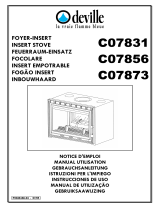 DEVILLE C07856 Manuale del proprietario
DEVILLE C07856 Manuale del proprietario
-
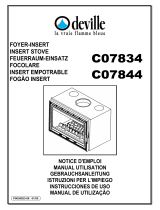 DEVILLE C07834 Manuale del proprietario
DEVILLE C07834 Manuale del proprietario
-
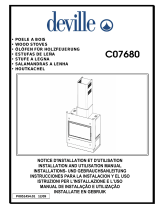 DEVILLE C07680 Manuale del proprietario
DEVILLE C07680 Manuale del proprietario
-
DEVILLE CHEMINETTE Manuale del proprietario
-
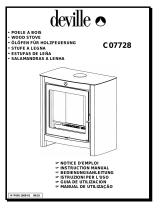 DEVILLE C07728 Manuale del proprietario
DEVILLE C07728 Manuale del proprietario
-
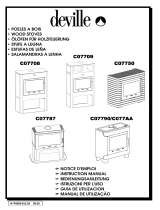 DEVILLE C07790 Manuale del proprietario
DEVILLE C07790 Manuale del proprietario
-
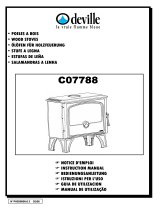 DEVILLE C07788 Manuale del proprietario
DEVILLE C07788 Manuale del proprietario
-
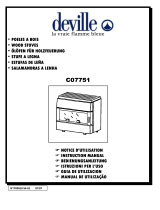 DEVILLE C07751 Manuale del proprietario
DEVILLE C07751 Manuale del proprietario
-
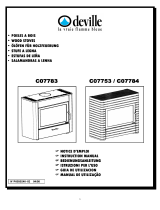 DEVILLE C07783 Manuale del proprietario
DEVILLE C07783 Manuale del proprietario
-
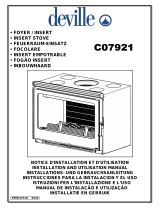 DEVILLE C07921 Manuale del proprietario
DEVILLE C07921 Manuale del proprietario


















































